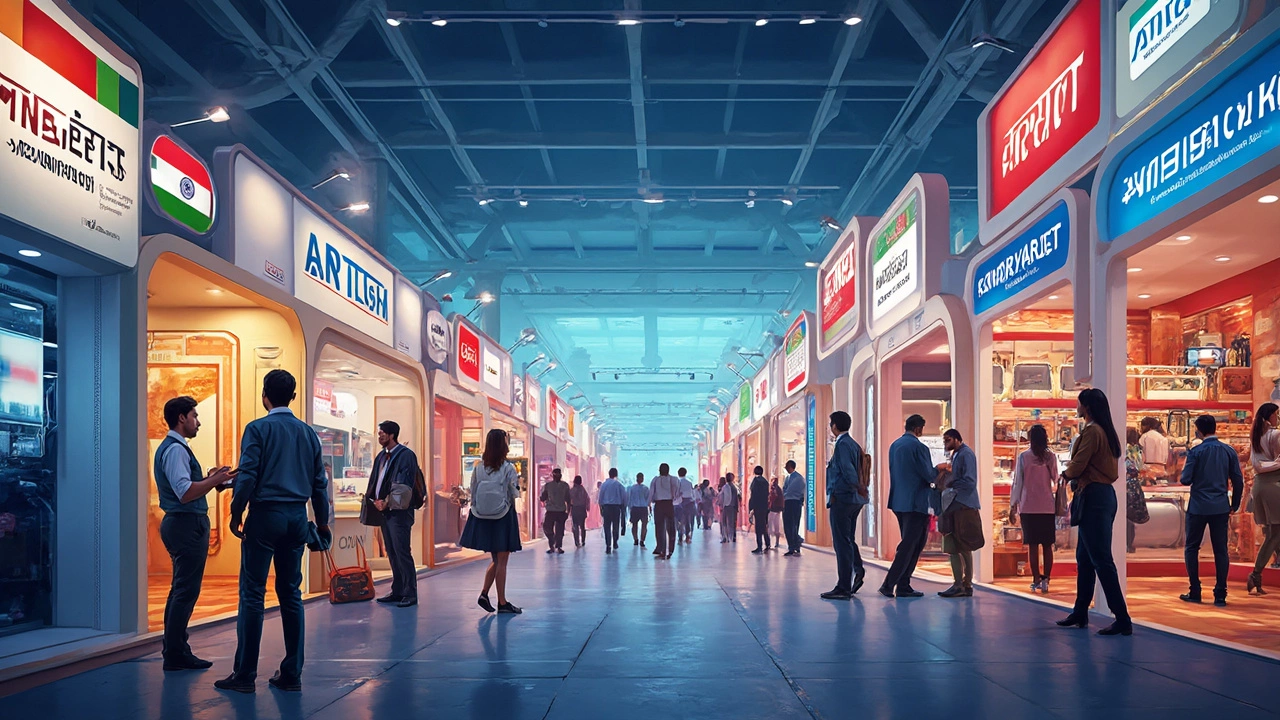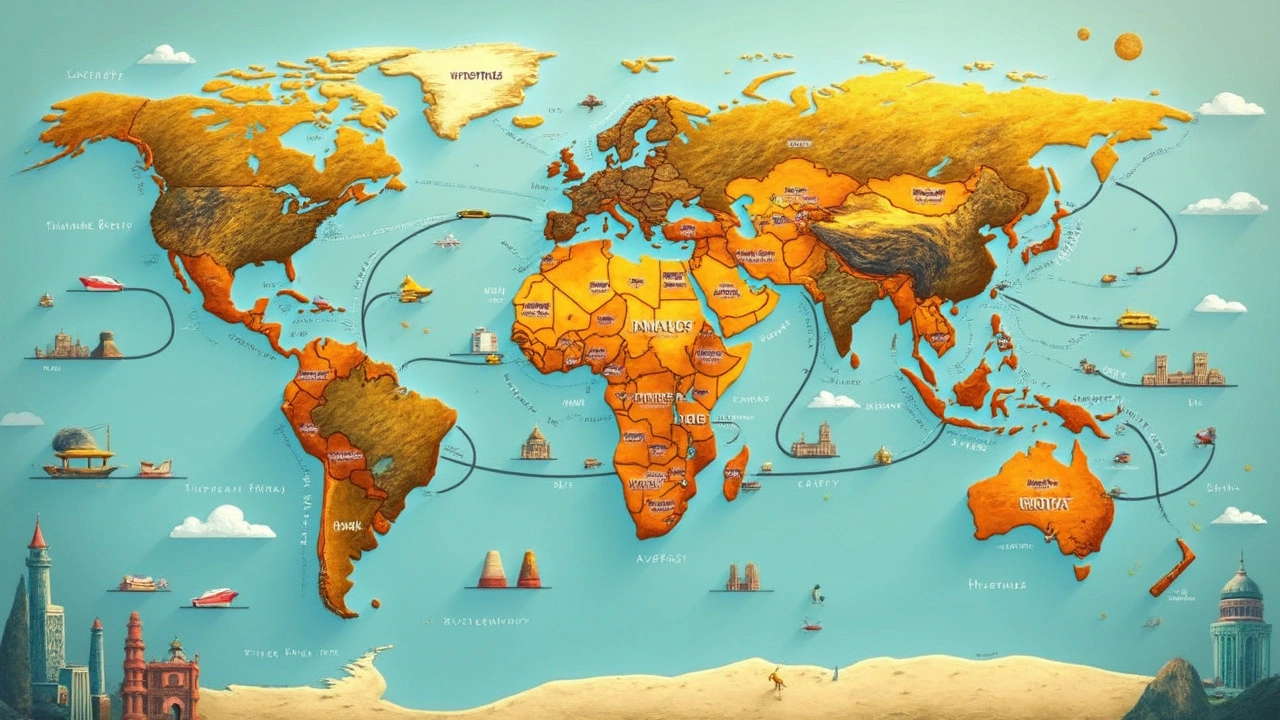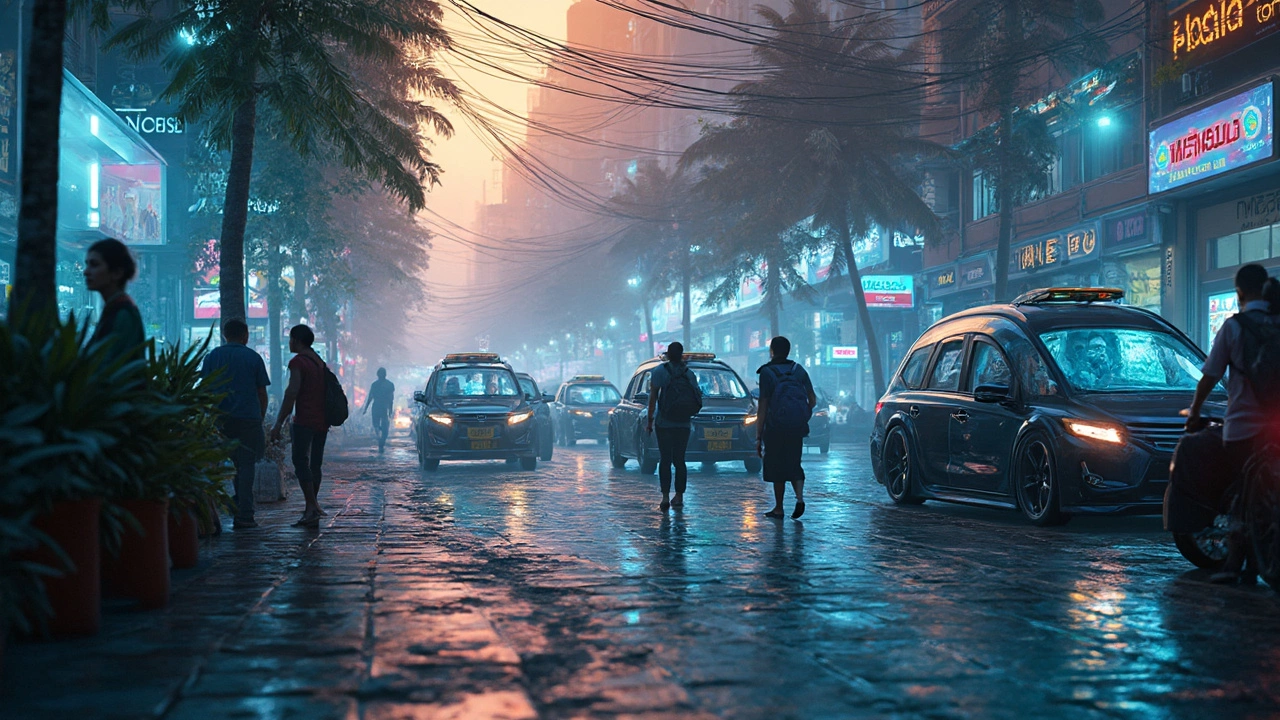International Trade: 5 Real-World Examples for Learners in India

Think about your smartphone for a moment. Chances are, it's a result of international trade. Most gadgets we use daily are built through a complex web of importing and exporting. Let's take tech gadgets as our first example of international trade. Companies like Apple design their products in the US, manufacture them in China, and then distribute them worldwide, including right here in India. This flow not only boosts consumer choice but also creates jobs and influences prices.
Now, let's shift gears to automobiles. Ever noticed how many foreign car brands drive on Indian roads? Companies in Germany, Japan, and the US export cars to India and other countries. These vehicles often come with advanced features and technologies that might not be locally available.
- Tech Gadgets Crossing Borders
- Automobile Exchange Across Continents
- Agricultural Products Going Global
- Fashion Brands and International Retail
- Services and the Digital Trade
Tech Gadgets Crossing Borders
Today, the global gadget market is booming, largely because of international trade. Companies design tech devices in one country, manufacture in another, and sell worldwide. It's a fascinating web of economic activity that makes our devices affordable and available.
Manufacturing and Assembly
Let's take a closer look at how this works with a brand like Apple. Although based in the U.S., many of its products are assembled in China. This is due to China's efficient manufacturing systems and skilled workforce. But it's not just about low costs. The proximity to various suppliers of components, like microchips and screens, also plays a huge role.
Supply Chain Dynamics
With globalization, electronic companies can source the best materials and technologies from around the world. You might have a microchip from Taiwan, display technology from Japan, and a design team based in California all contributing to the final product. This interconnected supply chain is why many tech devices are both cutting-edge and more accessible to consumers.
According to Tim Cook, Apple CEO, "We can focus on innovation because we have an extraordinary supply chain, capable of bringing our ideas to life on a global scale."
Impact on India
India is not just a major market for these goods. It's also emerging as a key player in the production and export of technology, with companies like Infosys and Tata Consultancy Services leading software development. Furthermore, the government's "Make in India" initiative encourages local manufacturing, providing incentives to companies to ensure strong domestic representation in global trade.
Interesting Numbers
| Year | India's Electronics Import (in billion USD) |
|---|---|
| 2020 | 50 |
| 2023 | 65 |
The increase in imports reflects growing demand and participation in the global trade landscape. India is simultaneously expanding its role not just as a consumer but as a crucial contributor to international supply chains.
As trade courses in India continue to evolve, understanding how tech gadgets cross borders offers valuable insights into the blend of economics and technology. It's a vibrant field ripe for exploration and engagement.
Automobile Exchange Across Continents
When it comes to international trade, the automobile industry is a prime example of how global everything has become. Take Japan's Toyota or Germany's BMW, for instance. These brands aren't just loved in their home countries; they're favorites across the world, including right here in India.
Why does this cross-border car exchange occur? For one, consumers benefit from a wide range of choices. Plus, foreign carmakers often offer features not yet produced locally. According to data, Japan exported over 4 million vehicles globally in 2023, with a significant chunk reaching Indian shores.
"The global automotive industry is more interconnected than ever, shaping economies and technology," remarks John Smith, CEO of Auto Insights.
Benefits of Automobile Trade
Imported cars often come with better technologies and higher safety standards. This boosts competition, pushing local manufacturers to improve. Additionally, parts made for these cars create jobs in logistics, sales, and servicing.
| Country | Exported Vehicles to India (2023) |
|---|---|
| Germany | 100,000 |
| Japan | 150,000 |
These numbers reveal how essential the automobile exchange is, not just for expanding consumer choices but also for spurring economic growth. For someone diving into trade courses in India, understanding this segment's intricacies can open doors to exciting careers.

Agricultural Products Going Global
Agricultural trade is a massive part of the international trade ecosystem. Picture your morning coffee: the beans likely traveled across continents before making it to your cup. This section explores how agricultural products from different parts of the world are traded globally, impacting economies and daily lives.
Spices from India
India is a leading exporter of spices. Whether it's black pepper, cumin, or turmeric, these spices are shipped to countries worldwide, enhancing cuisines globally. In fact, over 75% of turmeric used worldwide comes from India, highlighting its dominance in this sector.
Oil Seeds and Pulses
India also plays a significant role in exporting oil seeds and pulses, vital components of diets worldwide. The demand for these products has led India to become one of the top suppliers to regions like the Middle East and Southeast Asia.
Global Grain Trade
Let's not forget about grains. Wheat and rice are fundamental to global sustenance and trade. India is a giant exporter of basmati rice, with a large part heading to the Middle East and Europe. This trade not only supports farmers but also brings in significant revenue.
Impact on Local Farmers
With international trade, there are benefits and challenges for local farmers. They gain access to larger markets, which can lead to better prices. But, they also face competition from other countries. Understanding these dynamics is crucial for anyone pursuing trade courses India and looking to make an impact in the field.
Here's a quick snapshot of India's agricultural export in 2024:
| Product | Export Value (USD Billion) |
|---|---|
| Spices | 3.65 |
| Grains | 5.7 |
| Oil Seeds | 2.3 |
Ultimately, understanding the trade of agricultural products is vital. It not only affects the economy but also shapes our daily lives. For those studying or working in trade courses India, grasping these concepts can open doors to numerous career opportunities.
Fashion Brands and International Retail
Let’s talk about fashion—because who doesn’t love a fresh wardrobe? International trade is a major player in bringing some of the trendiest brands right to your local mall or even your doorstep. Whether it’s Zara from Spain or H&M from Sweden, these companies have cracked the code on global trade.
Take Zara for instance. It's a master of quick fashion turnover thanks to its refined supply chain. Designs and ideas are born in the brains of the company’s top creatives in Spain. From there, the magic trick is getting those threads made in places like Portugal and Turkey, before they're whisked off around the world.
And then there's H&M, which spreads its wings even wider. With production units stationed globally—from Bangladesh to India—the brand employs an army of manufacturers. This keeps costs low and choices vast. That way, your summer wardrobe is both trendy and affordable.
This isn't just good for the brands. It creates jobs in all corners of the world, from designers and retail workers in India to textile producers in Bangladesh. Everyone gets a slice of the pie!
| Brand | Origin Country | Production |
|---|---|---|
| Zara | Spain | Portugal, Turkey |
| H&M | Sweden | Bangladesh, India |
Now, the rise of online shopping has supercharged this. You can snag a cool pair of sneakers all the way from Italy while lounging on your couch. Platforms like ASOS ship internationally, boasting a variety that would once seem impossible.
So, how does this affect you? For one, it offers a blend of international styles and trends at your fingertips, widening your fashion palate. Plus, these interactions play a pivotal role in trade courses in India, as students can analyze real-world trade patterns and their outcomes.

Services and the Digital Trade
Welcome to the world where goods aren't the only things crossing borders. Digital trade is booming, and it's changing how countries do business. The exchange of digital services includes anything from IT solutions to online education platforms. Have you ever considered how software development firms in India work with clients in the US or Europe? That's digital trade in action.
India's IT Powerhouse
India is a global leader when it comes to IT services. Companies like TCS, Infosys, and Wipro have positioned themselves as top providers of tech solutions to international clients. This isn't just theory; these giants contribute significantly to India's GDP, employing millions as they offer BPO, consulting, and IT services worldwide.Think about the apps on your phone. Development teams around the world collaborate, often involving Indian developers, to bring innovative software solutions to life. Thanks to digital trade, these collaborations benefit consumers globally with cutting-edge solutions delivered swiftly and often at a lower cost.
e-Commerce: Crossing Digital Borders
Amazon and Alibaba are fantastic examples of how international trade isn't limited to physical goods. These platforms provide a marketplace for businesses to reach a global audience, breaking geographical barriers. Indian artisans, for instance, now ship their handcrafted products to customers far beyond local markets. This change isn't only reshaping traditional business models; it's empowering smaller players to reach new heights.In a 2023 report, it was estimated that India's e-commerce market would grow to over $100 billion by 2025. This growth is fueled by increased internet penetration and innovations in mobile connectivity. Such strides highlight the role digital platforms play in international trade.

Post-Comment